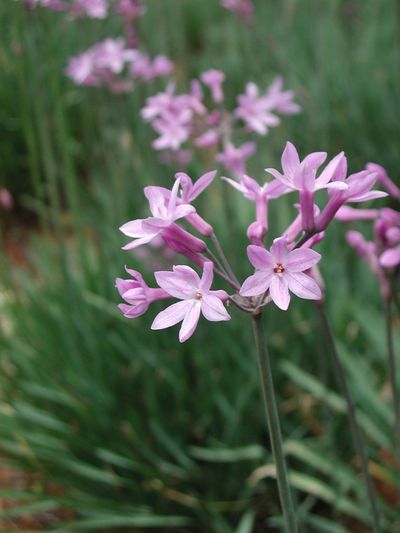Growing Society Garlic
Society garlic care is minimal in USDA gardening zones 7-10, where it is hardy. Growing society garlic produces sweet-smelling flowers with stems that smell faintly of garlic when crushed. Society garlic flowers bloom in a tubular shape with 8 to 20 flowers on each cluster. Flowers widen to an inch (2.5 cm.) on this long-lived perennial, which spreads slowly and is not invasive. Of the Amaryllis family, society garlic flowers may be lavender, variegated or pink in color. Larger society garlic flowers grow on the cultivars ‘Silver Lace’ and ‘Variegata,’ with cream-colored stripes. The ‘Tricolor’ variety has pink and white variegation. Society garlic performs best in light or sandy soils and needs full sun for the most abundant flowering. Society garlic care includes keeping the plant watered and removing foliage that may be damaged by frost. Society garlic flowers return reliably each year.
Can You Eat Society Garlic?
Many sources agree the bulbs and leaves of the society garlic plant are edible and can be used as a substitute for garlic and garlic chives. Society garlic is often sold as an herb. Flowers are edible as well, and may be used for decoration on salads and desserts. The name of the society garlic plant stems from edible parts not leaving an offensive odor on one’s breath after eating it, but the bulb may be best left in the ground to continue the production of showy, fragrant flowers In addition to edible uses, the society garlic plant is said to deter moles from vegetables and other flowers when planted in a surrounding row or border. The garlic fragrance emitting from the plant repels deer, making it useful as a companion plant in the garden and containers. Other uses of crushed leaves of the society garlic plant include repelling fleas, ticks, and mosquitoes when rubbed on the skin. So the answer to, “Can you eat society garlic?” is yes, but make sure to take advantage of its many other uses.
